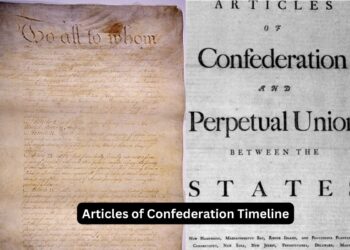Introduction
Summary of Mr Bennett and Mrs. Brown by Virginia Woolf “Mr. Bennett and Mrs. Brown” is an influential essay written by Virginia Woolf in 1924, addressing the changing landscape of literature and the role of character development in modern fiction. In this essay, Woolf critiques the established conventions of literary realism, particularly as exemplified by the works of Edward Morgan Forster and Arnold Bennett. By using the fictional character Mrs. Brown as a representation of the new type of character emerging in contemporary literature, Woolf articulates her vision for a more profound exploration of the human experience, emphasizing the psychological and emotional dimensions of her characters.
Woolf’s essay is structured as a meditation on the relationship between the writer and the subject, focusing on the challenges of capturing the complexity of modern life and the necessity of evolving narrative techniques. Through her insightful observations, Woolf invites readers to reconsider the nature of character and the ways in which authors convey the essence of human existence.Summary of Mr Bennett and Mrs. Brown by Virginia Woolf
Summary
1. Contextualizing the Essay
Woolf wrote “Mr. Bennett and Mrs. Brown” as a response to the literary climate of her time, particularly the dominance of Edwardian writers like Arnold Bennett, who focused on the external aspects of character and social settings. Woolf felt that this approach was increasingly inadequate for capturing the complexities of modern life and the inner lives of individuals. The essay was originally presented as a lecture, and its primary aim is to discuss the evolution of character representation in literature.
READ MORE
2. The Characters of Mr. Bennett and Mrs. Brown
Woolf introduces the titular characters, Mr. Bennett and Mrs. Brown, as symbolic representations of contrasting literary philosophies. Mr. Bennett, embodying the traditional realist writer, focuses on surface details and social contexts, often neglecting the deeper psychological layers of his characters. In contrast, Mrs. Brown represents the new type of character that Woolf believes modern writers must engage with—one that encapsulates the complexities of the human spirit.
Woolf illustrates Mrs. Brown as a character whose essence cannot be easily defined or understood through conventional narrative techniques. She exists in a realm of emotional depth and ambiguity, embodying the shifting realities of modern life. Woolf posits that to capture Mrs. Brown’s character, writers must adopt new methods that transcend traditional storytelling.
![Mr. Bennett and Mrs. Brown [Argyll House] by WOOLF, Virginia (1882-1941); [Sibyl Lady Colefax]: Fine Pictorial Wrappers (1924) First Printing. | Fine Editions Ltd](https://pictures.abebooks.com/inventory/31167297874_2.jpg)
3. Critique of Traditional Realism
Woolf critiques the traditional realist approach to character development, arguing that it fails to convey the richness of human experience. She believes that the focus on external details and social interactions often overshadows the inner emotional landscape of characters. This, she asserts, leads to a superficial understanding of their motivations and desires.
Summary of Mr Bennett and Mrs. Brown by Virginia Woolf Using the example of Mrs. Brown, Woolf argues that characters must be explored in terms of their inner lives and existential struggles. She asserts that contemporary writers need to go beyond the external appearances of their characters and delve into their psychological states to create a more profound and authentic representation of human experience.
4. The Importance of Emotion
Woolf emphasizes the significance of emotion in character portrayal. She believes that a character’s inner feelings, thoughts, and perceptions are crucial to understanding their identity. The emotional depth of characters, such as Mrs. Brown, reflects the complexities of human life and the myriad factors that shape individual experiences.Summary of Mr Bennett and Mrs. Brown by Virginia Woolf
Woolf argues that emotion cannot be separated from character development; instead, it should be at the forefront of narrative exploration. By prioritizing emotional authenticity, writers can create characters that resonate with readers on a deeper level, allowing for a more profound connection between the audience and the text.Summary of Mr Bennett and Mrs. Brown by Virginia Woolf
READ MORE
5. The Role of the Writer
In “Mr. Bennett and Mrs. Brown,” Woolf contemplates the role of the writer in capturing the essence of their characters. She posits that writers must evolve their techniques to accommodate the complexities of modern life. This involves moving away from the rigid structures of traditional storytelling and embracing a more fluid and intuitive approach.
Woolf encourages writers to engage with the emotional and psychological aspects of their characters, emphasizing the need for a more holistic understanding of human experience. This shift in perspective allows for a richer exploration of character and a deeper connection to the themes of love, loss, and identity.Summary of Mr Bennett and Mrs. Brown by Virginia Woolf
6. Stream of Consciousness and Characterization
Woolf advocates for the use of stream-of-consciousness as a narrative technique that can more effectively convey the complexities of modern characters. By capturing the fluidity of thought and emotion, writers can create a more nuanced portrayal of their subjects. This technique allows for an exploration of the inner workings of the mind, revealing the layers of consciousness that define human experience.Summary of Mr Bennett and Mrs. Brown by Virginia Woolf
In the case of Mrs. Brown, Woolf suggests that a stream-of-consciousness approach would enable writers to delve into her psychological state, revealing the intricacies of her character. This method fosters a deeper understanding of the emotional and existential struggles that individuals face in the modern world.Summary of Mr Bennett and Mrs. Brown by Virginia Woolf
7. The Modern Character
Woolf defines the modern character as one that embodies ambiguity and complexity. Unlike traditional characters, who are often defined by clear traits and motivations, modern characters exist within a landscape of uncertainty and fluidity. Mrs. Brown serves as a prime example of this new type of character, representing the multifaceted nature of human identity.
Woolf argues that contemporary writers must embrace this complexity in their characterizations, allowing for a more authentic representation of the human experience. By doing so, they can engage readers in a deeper exploration of what it means to be human in a rapidly changing world.Summary of Mr Bennett and Mrs. Brown by Virginia Woolf

8. The Influence of Society
Woolf acknowledges the impact of societal changes on character development. The early 20th century was marked by significant shifts in social norms, gender roles, and cultural values, which influenced how individuals perceived themselves and their relationships with others. Woolf argues that writers must respond to these changes by creating characters that reflect the evolving dynamics of society.
Summary of Mr Bennett and Mrs. Brown by Virginia Woolf Mrs. Brown embodies the struggles of women navigating a patriarchal society, reflecting the broader challenges faced by individuals in the modern world. Woolf’s portrayal of her character serves as a commentary on the complexities of identity and the ways in which society shapes individual experiences.
READ MORE
9. Conclusion of the Essay
In the concluding sections of the essay, Woolf reinforces her argument for a new approach to character development in literature. She emphasizes the need for writers to transcend traditional realism and engage with the emotional and psychological dimensions of their characters. By doing so, they can create a richer and more authentic representation of the human experience.Summary of Mr Bennett and Mrs. Brown by Virginia Woolf
Woolf’s exploration of Mr. Bennett and Mrs. Brown serves as a call to arms for contemporary writers, urging them to embrace the complexities of modern life and to capture the essence of their characters in a way that resonates with readers. The essay ultimately advocates for a literary evolution that reflects the intricacies of existence in a rapidly changing world.Summary of Mr Bennett and Mrs. Brown by Virginia Woolf
Themes
- The Nature of Character: Woolf’s essay emphasizes the importance of understanding characters beyond their external traits, advocating for a deeper exploration of their inner lives.
- Emotion and Experience: The centrality of emotion in character portrayal is a key theme, highlighting the need for writers to capture the psychological dimensions of their subjects.
- Societal Change: Woolf acknowledges the influence of societal changes on individual identity, encouraging writers to create characters that reflect the complexities of their time.
- Literary Evolution: The essay serves as a manifesto for the evolution of literature, advocating for new narrative techniques that can effectively convey the intricacies of modern life.
- Ambiguity and Complexity: Woolf champions the modern character as one that embodies ambiguity and complexity, reflecting the multifaceted nature of human identity.
Conclusion
“Mr. Bennett and Mrs. Brown” is a seminal essay that critiques traditional approaches to character development in literature while advocating for a more nuanced exploration of the human experience. Through her analysis of Mr. Bennett’s and Mrs. Brown’s contrasting philosophies, Woolf articulates a vision for modern fiction that prioritizes emotional depth and psychological complexity. The essay is a profound reflection on the nature of literature and the role of the writer in capturing the intricacies of modern life.Summary of Mr Bennett and Mrs. Brown by Virginia Woolf
FAQ
1. What is “Mr. Bennett and Mrs. Brown” about?
The essay critiques traditional character representation in literature, contrasting the realist approach of writers like Arnold Bennett with Woolf’s vision for a deeper exploration of emotional and psychological complexity in characters.
2. Who are the main characters discussed in the essay?
The main characters are Mr. Bennett, representing traditional realism, and Mrs. Brown, symbolizing the new type of character that Woolf advocates for—one that embodies emotional depth and complexity.
3. What narrative techniques does Woolf advocate for?
Woolf advocates for the use of stream-of-consciousness and other experimental techniques that allow writers to capture the fluidity of thought and emotion, providing a more nuanced portrayal of characters.
4. How does Woolf define the modern character?
Woolf defines the modern character as one that embodies ambiguity and complexity, existing within a landscape of uncertainty rather than being confined to clear traits and motivations.
5. What role does society play in character development?
Woolf acknowledges that societal changes influence individual identity, encouraging writers to create characters that reflect the evolving dynamics of their time.
6. What is the significance of emotion in Woolf’s essay?
Emotion is central to character portrayal, as Woolf emphasizes the need for writers to engage with the psychological aspects of their characters to create a more authentic representation of human experience.
7. What does Woolf critique about traditional realism?
Woolf critiques traditional realism for its focus on surface details and social contexts, arguing that it often neglects the inner emotional landscape of characters.
8. How does Woolf’s essay relate to modernist literature?
Woolf’s essay reflects modernist themes by challenging established conventions and advocating for a new approach to literature that emphasizes emotional depth and psychological complexity.
9. What is the overall message of the essay?
The overall message is a call for literary evolution, urging writers to embrace the complexities of modern life and capture the essence of their characters in a way that resonates with readers.
10. How does “Mr. Bennett and Mrs. Brown” influence contemporary literature?
The essay has had a lasting impact on contemporary literature, encouraging writers to explore character development in more innovative and emotionally resonant ways, shaping the landscape of modern fiction.
READ MORE

















